
Spring storms that emerged with the receding of winter brought heavy rains across much of the United States. Now, Americans are looking forward to summer — which in some regions is a dry season. No matter where you are in the country, however, there is always the chance of rain.
The United States is home to wildly diverse climates and weather patterns. 24/7 Wall St. examined this geographical variation with a focus on precipitation. For each state, we reviewed yearly average rainfall between 1901 and 2000, as well as 30 year average precipitation levels through 2010 from the government scientific agency National Oceanic and Atmospheric Administration (NOAA). This is the latest period for which such historical data is available.
Some states have distinct wet and dry seasons. In an email to 24/7 Wall St., U.S. Department of Agriculture meteorologist Brad Rippey explained that in California, for example, “The wet season, lasting from late autumn to early spring, is driven by storms associated with the polar jet stream, sometimes supplemented by subtropical moisture (atmospheric rivers or ‘pineapple express’).”
California and several southwestern states, during this part of the year have Mediterranean climates, characterized by sometimes exceedingly dry summers, Rippey said. These states are home to some of the hottest places in the country (click here to see the hottest city in every state).
Elsewhere, such as on the Plains, where moisture from the Gulf of Mexico is pulled into the region, or in near-tropical states like Florida, precipitation peaks during the warm season. The Plains region and Florida are each home to many of the cities with the best weather.
Peak precipitation occurs at different months in different states. In 34 states, the rainiest months are the summer months of May, June, and July. March is the rainiest month in the New England states of Massachusetts, New Jersey, and Rhode Island, as well as in Alabama — one of the rainiest states in the nation. In eight states, late fall and winter months record peak rainfall.
Click here to see the states with the most rain.
To identify the states with the most rain, 24/7 Wall St. reviewed for each state average yearly precipitation from 1901 to 2000 using the Climate-at-a-Glance feature of the National Centers for Environmental Information produced by the National Oceanic and Atmospheric Administration (NOAA). We also reviewed for each state average monthly rainfall based on precipitation data collected from 1981 through 2010, also from NOAA. 100 years of data were not available for Hawaii, so its ranking is based on the average yearly rainfall over the 30 years through 2010.

50. Nevada
> Average yearly rainfall: 10.3 inches
> Average monthly rainfall: 0.7 inches
> Rainiest time of year: 0.9 inches in January
See all stories featuring: Nevada
[in-text-ad]
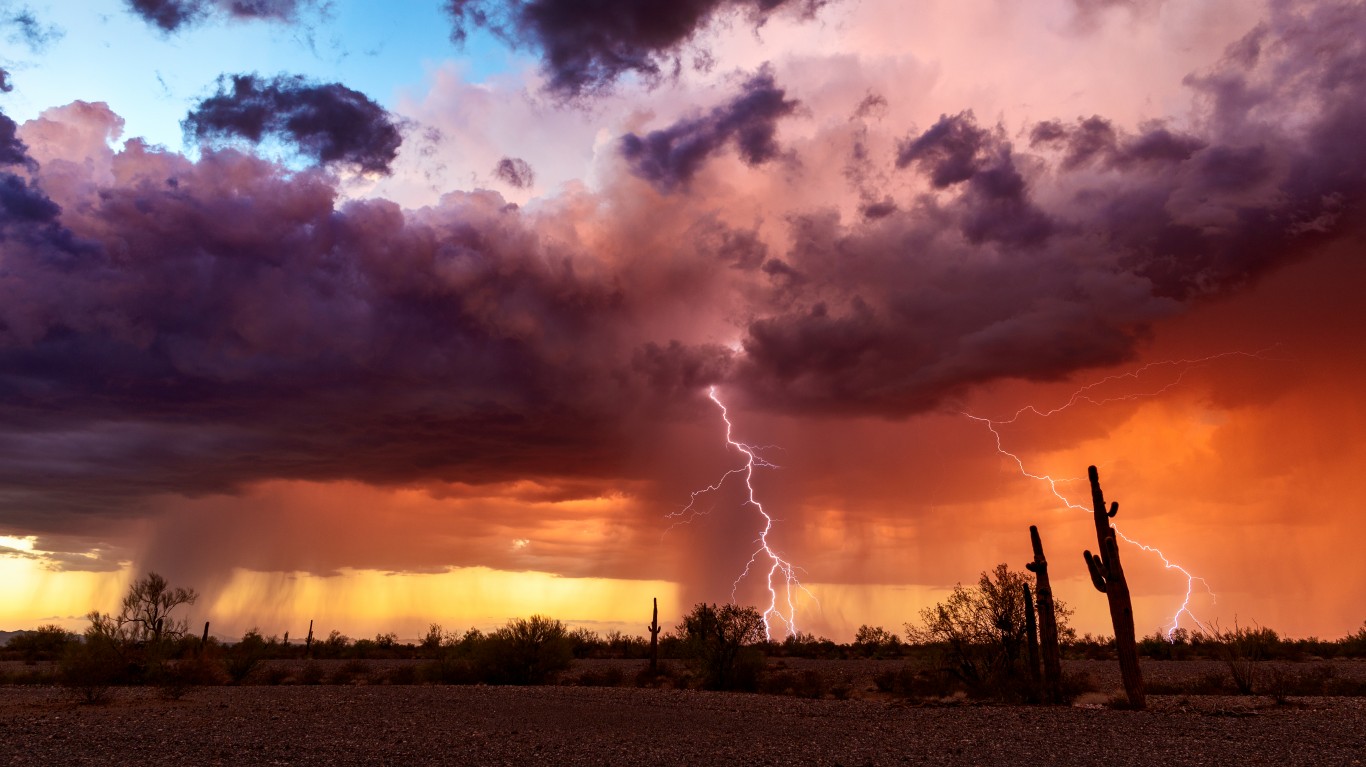
49. Arizona
> Average yearly rainfall: 12.6 inches
> Average monthly rainfall: 0.9 inches
> Rainiest time of year: 1.7 inches in August
See all stories featuring: Arizona
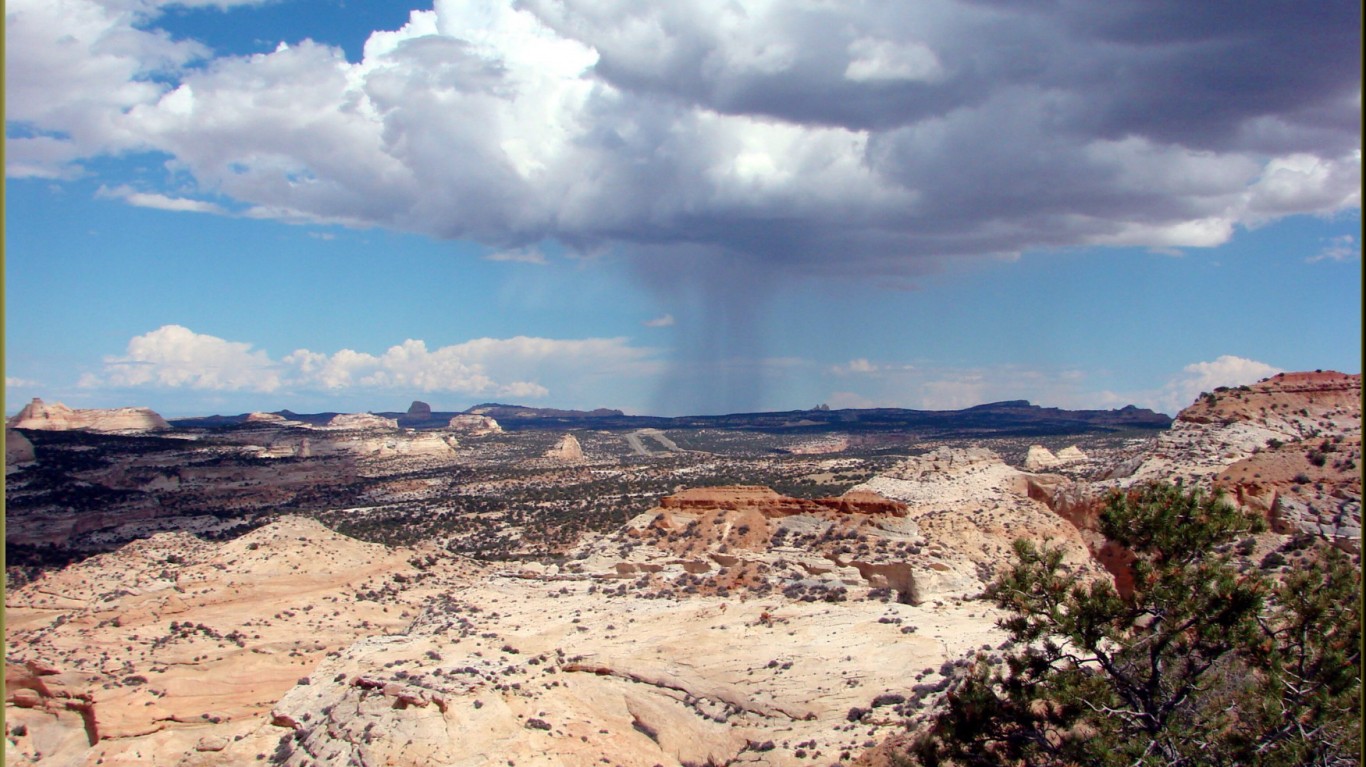
48. Utah
> Average yearly rainfall: 13.6 inches
> Average monthly rainfall: 1.1 inches
> Rainiest time of year: 1.5 inches in April
See all stories featuring: Utah
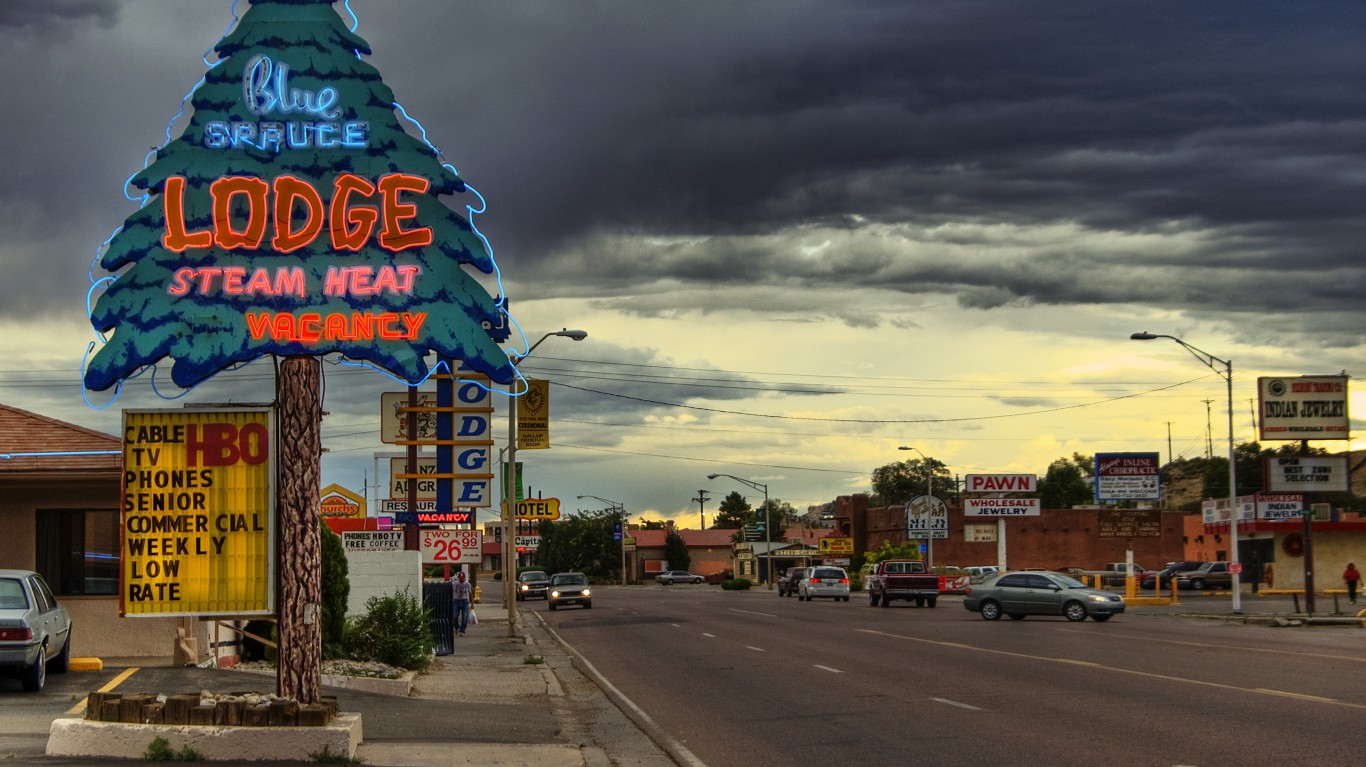
47. New Mexico
> Average yearly rainfall: 14.0 inches
> Average monthly rainfall: 1.1 inches
> Rainiest time of year: 2.2 inches in August
See all stories featuring: New Mexico
[in-text-ad-2]
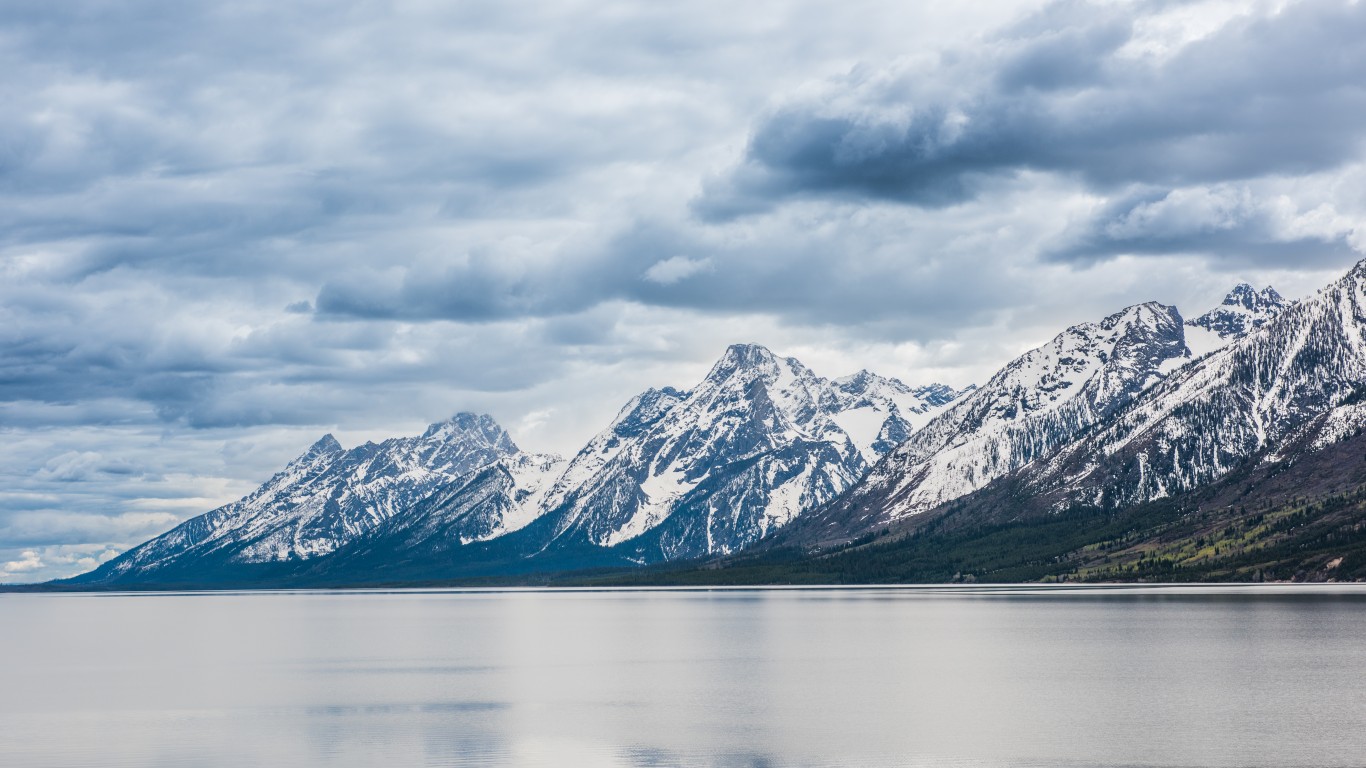
46. Wyoming
> Average yearly rainfall: 15.9 inches
> Average monthly rainfall: 1.2 inches
> Rainiest time of year: 2.1 inches in May
See all stories featuring: Wyoming

45. North Dakota
> Average yearly rainfall: 17.3 inches
> Average monthly rainfall: 1.6 inches
> Rainiest time of year: 3.3 inches in June
See all stories featuring: North Dakota
[in-text-ad]
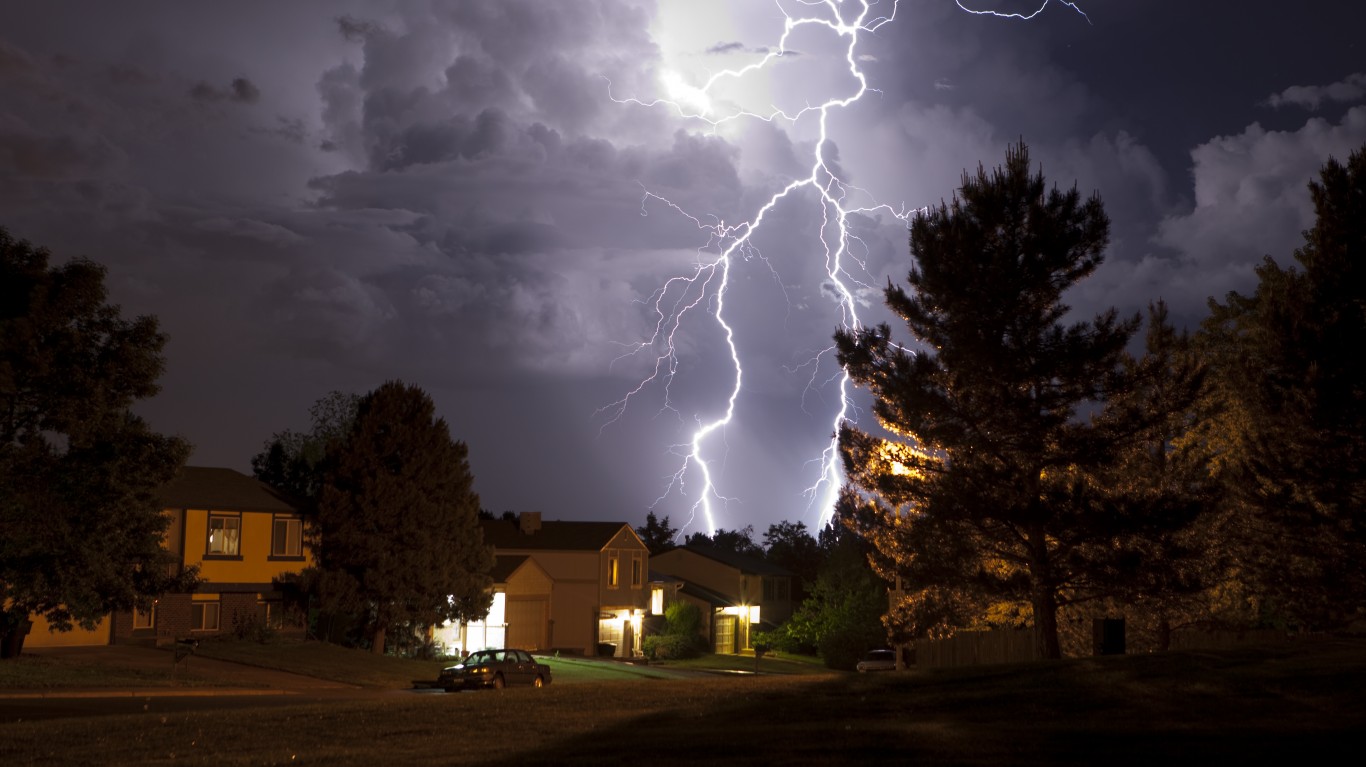
44. Colorado
> Average yearly rainfall: 18.1 inches
> Average monthly rainfall: 1.0 inches
> Rainiest time of year: 1.9 inches in August
See all stories featuring: Colorado

43. Montana
> Average yearly rainfall: 18.7 inches
> Average monthly rainfall: 1.1 inches
> Rainiest time of year: 2.3 inches in June
See all stories featuring: Montana
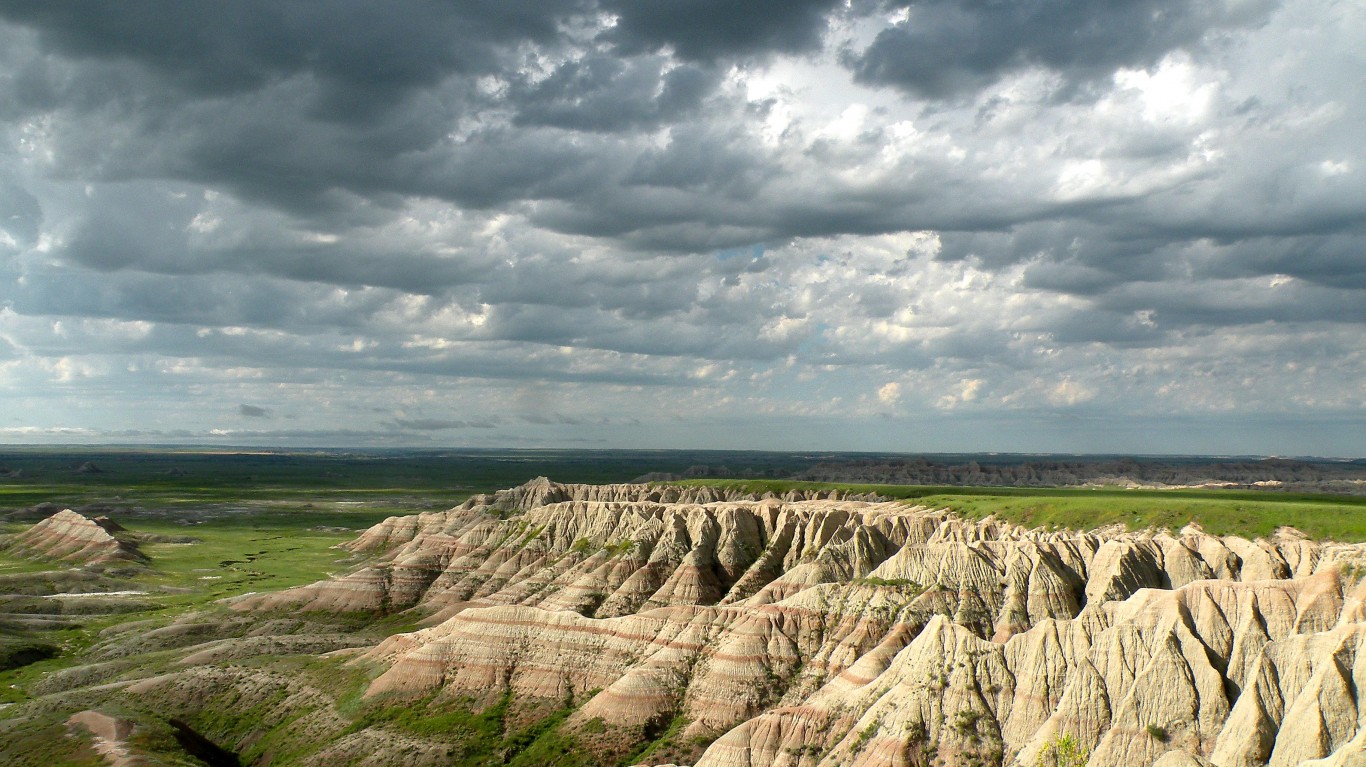
42. South Dakota
> Average yearly rainfall: 19.1 inches
> Average monthly rainfall: 1.8 inches
> Rainiest time of year: 3.5 inches in June
See all stories featuring: South Dakota
[in-text-ad-2]

41. California
> Average yearly rainfall: 22.4 inches
> Average monthly rainfall: 1.6 inches
> Rainiest time of year: 3.8 inches in February
See all stories featuring: California
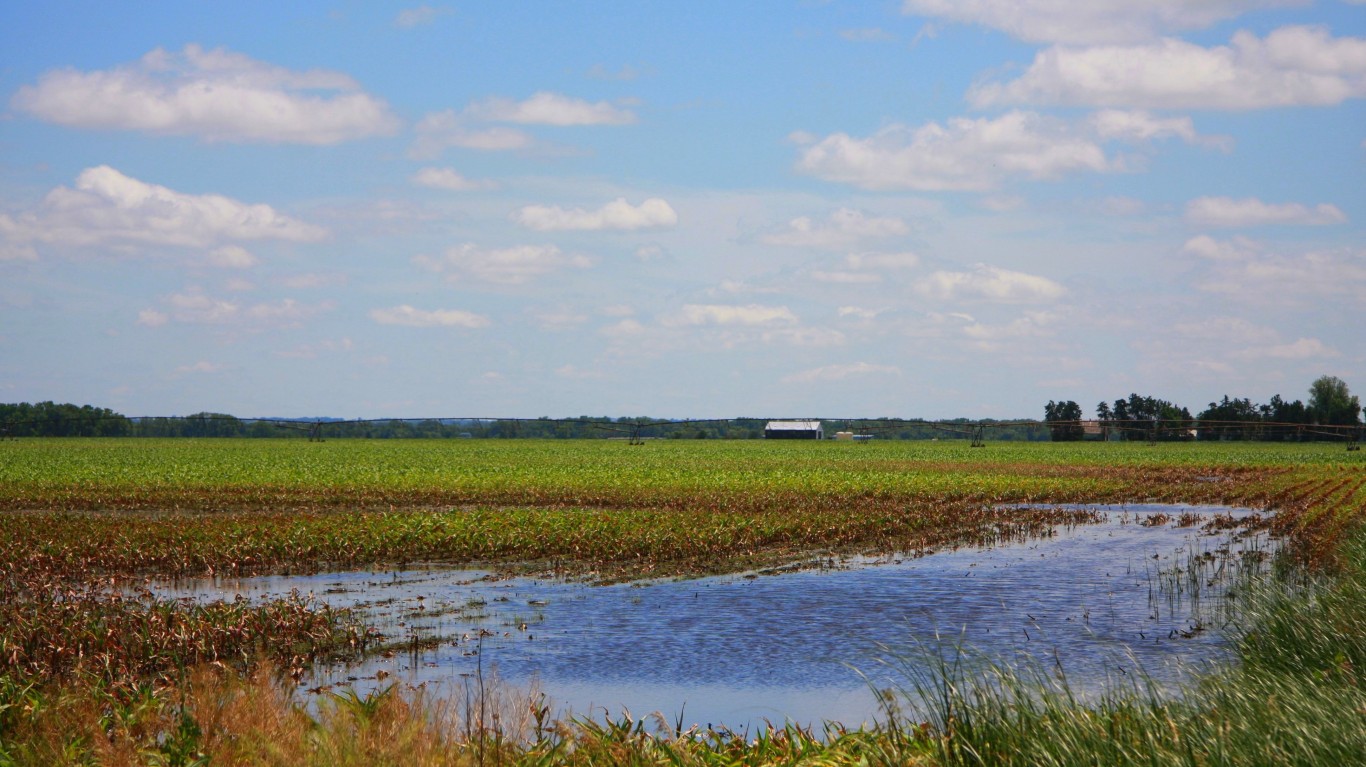
40. Nebraska
> Average yearly rainfall: 22.6 inches
> Average monthly rainfall: 2.1 inches
> Rainiest time of year: 3.9 inches in May
See all stories featuring: Nebraska
[in-text-ad]
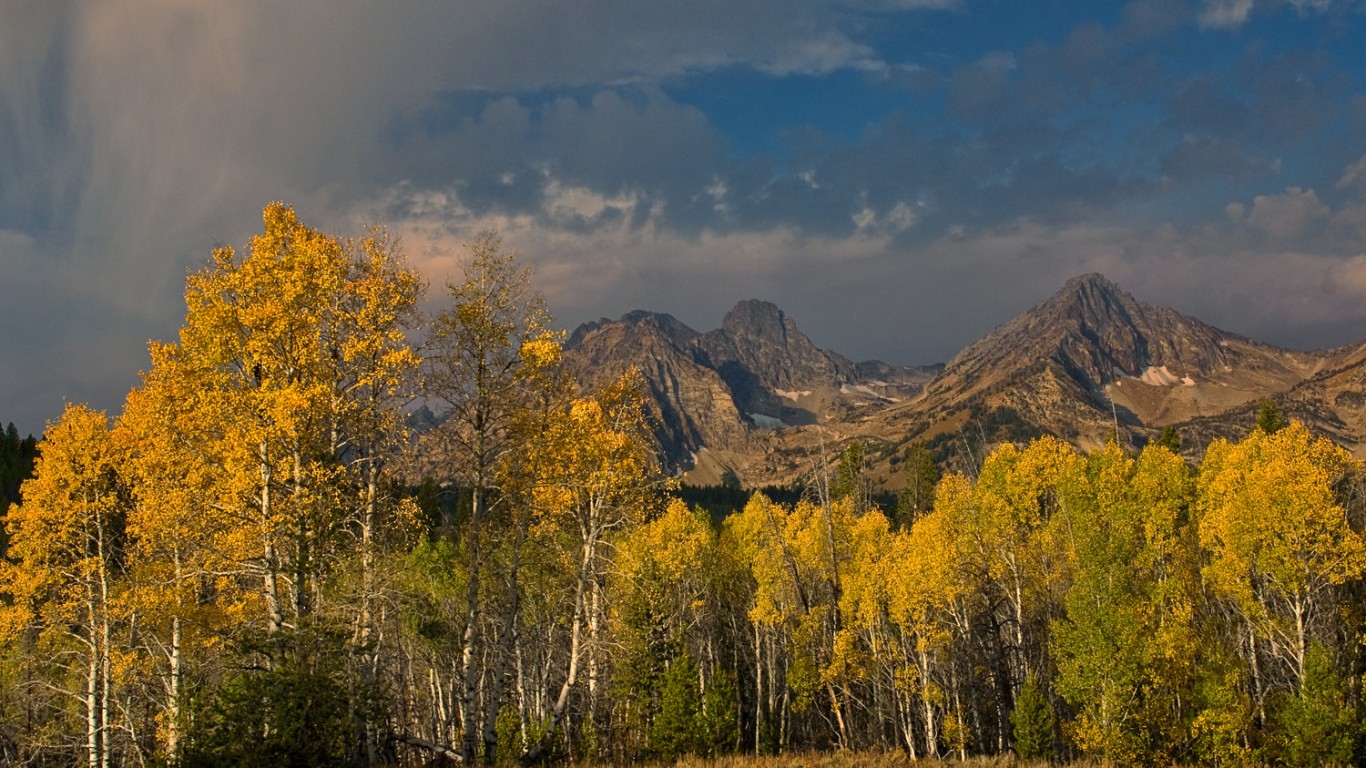
39. Idaho
> Average yearly rainfall: 23.9 inches
> Average monthly rainfall: 1.0 inches
> Rainiest time of year: 1.5 inches in May
See all stories featuring: Idaho
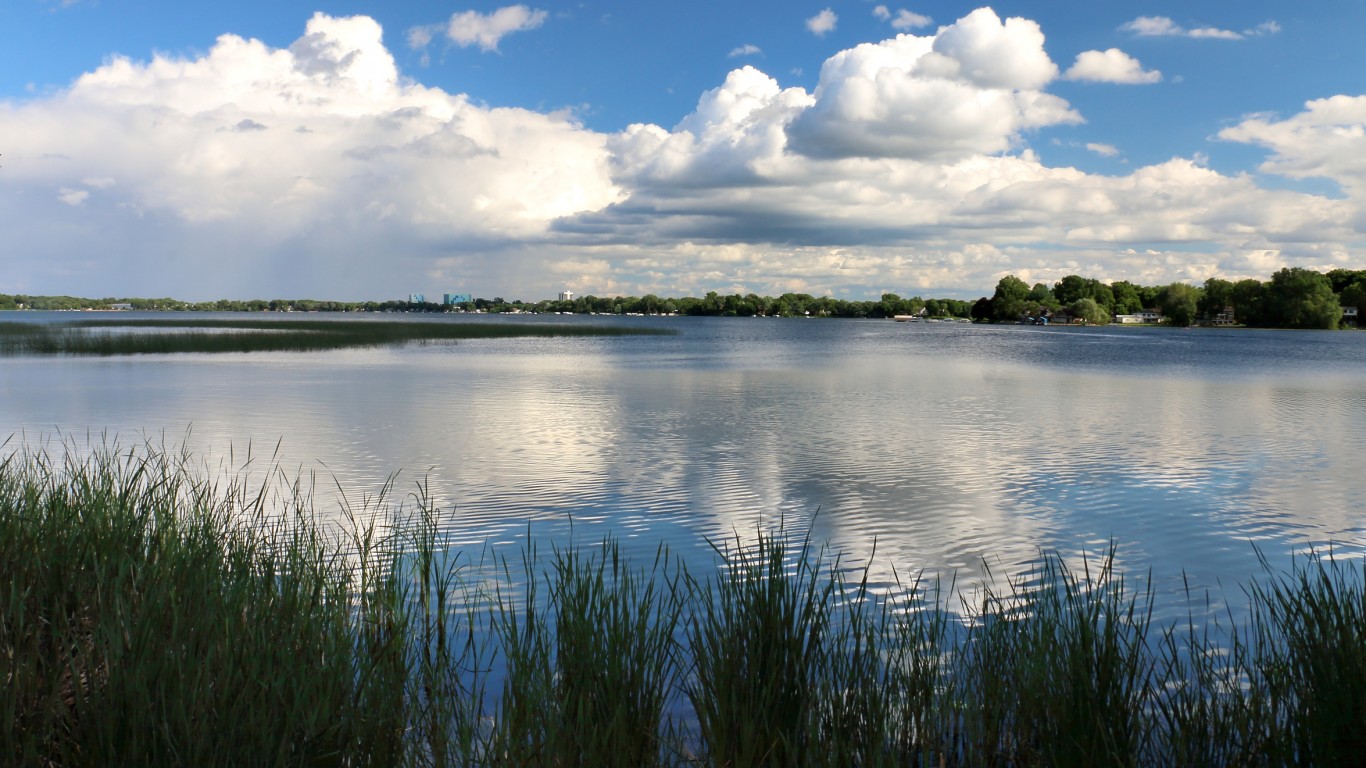
38. Minnesota
> Average yearly rainfall: 26.0 inches
> Average monthly rainfall: 2.4 inches
> Rainiest time of year: 4.3 inches in June
See all stories featuring: Minnesota
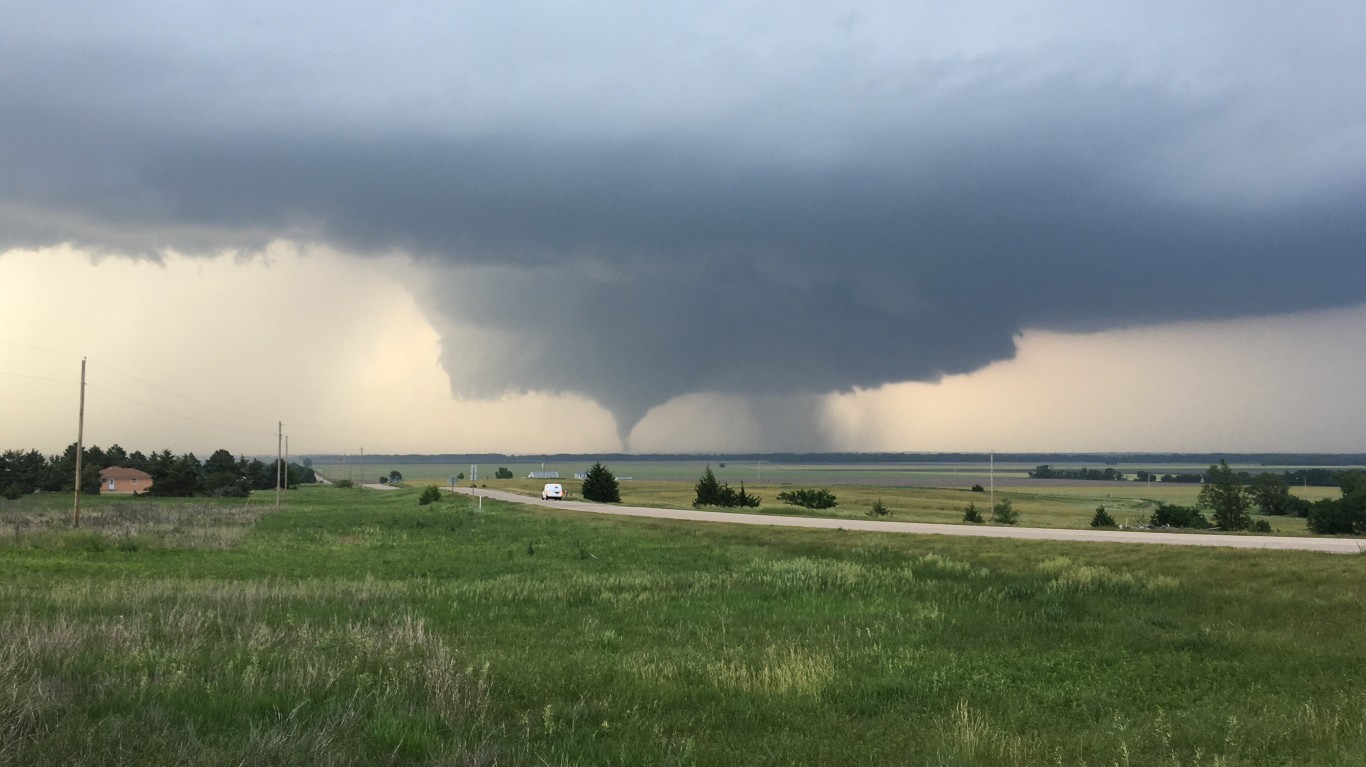
37. Kansas
> Average yearly rainfall: 27.1 inches
> Average monthly rainfall: 2.3 inches
> Rainiest time of year: 4.3 inches in June
See all stories featuring: Kansas
[in-text-ad-2]
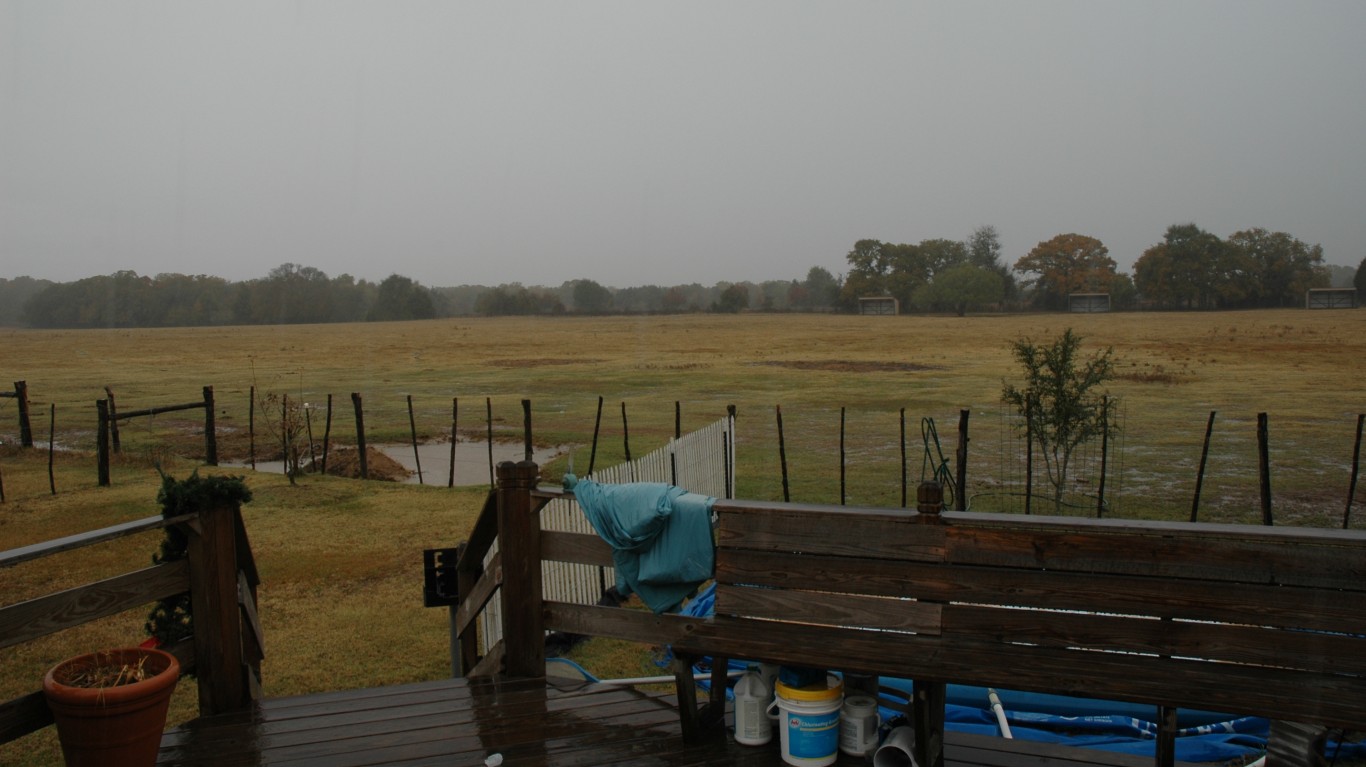
36. Texas
> Average yearly rainfall: 27.1 inches
> Average monthly rainfall: 2.5 inches
> Rainiest time of year: 3.6 inches in June
See all stories featuring: Texas
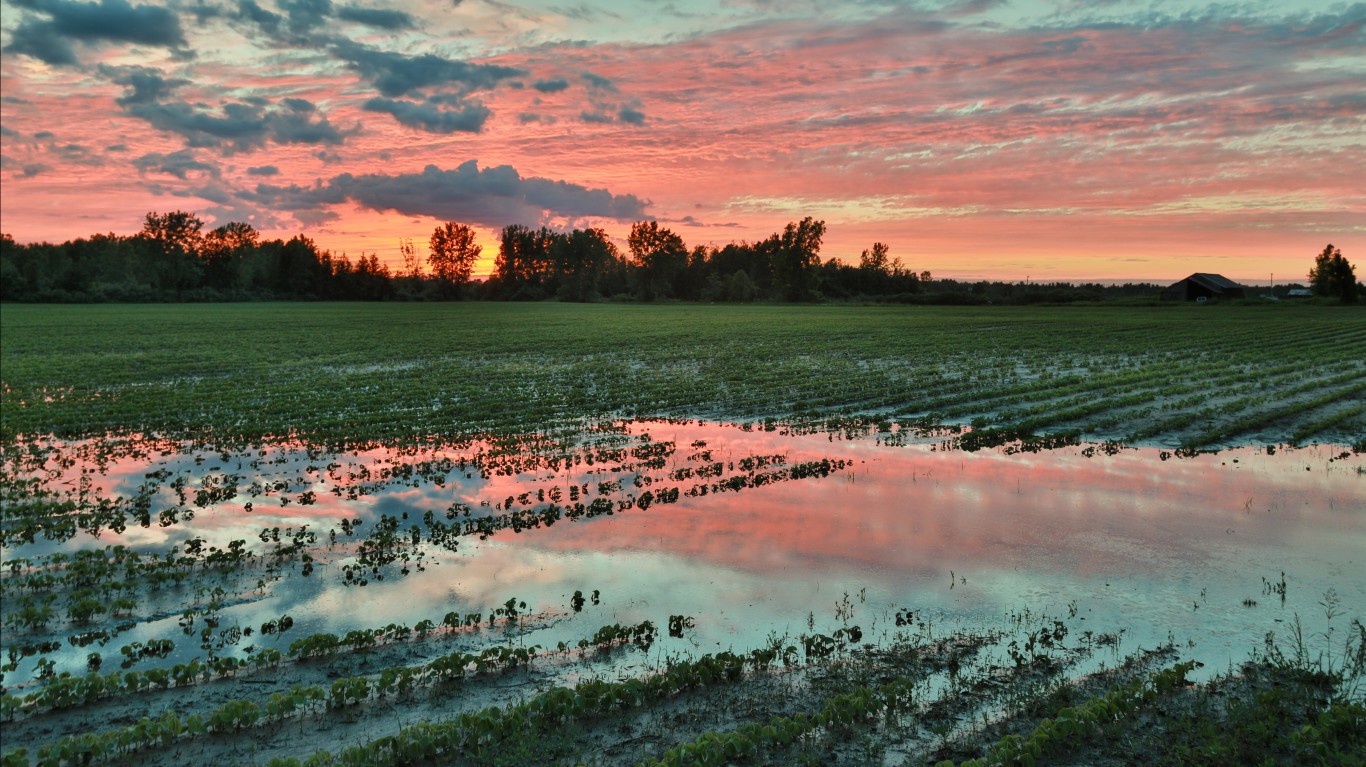
35. Michigan
> Average yearly rainfall: 31.1 inches
> Average monthly rainfall: 2.6 inches
> Rainiest time of year: 3.5 inches in September
See all stories featuring: Michigan
[in-text-ad]

34. Wisconsin
> Average yearly rainfall: 31.3 inches
> Average monthly rainfall: 2.7 inches
> Rainiest time of year: 4.2 inches in June
See all stories featuring: Wisconsin

33. Iowa
> Average yearly rainfall: 32.1 inches
> Average monthly rainfall: 2.8 inches
> Rainiest time of year: 4.5 inches in June
See all stories featuring: Iowa

32. Oregon
> Average yearly rainfall: 32.2 inches
> Average monthly rainfall: 2.8 inches
> Rainiest time of year: 5.5 inches in December
See all stories featuring: Oregon
[in-text-ad-2]
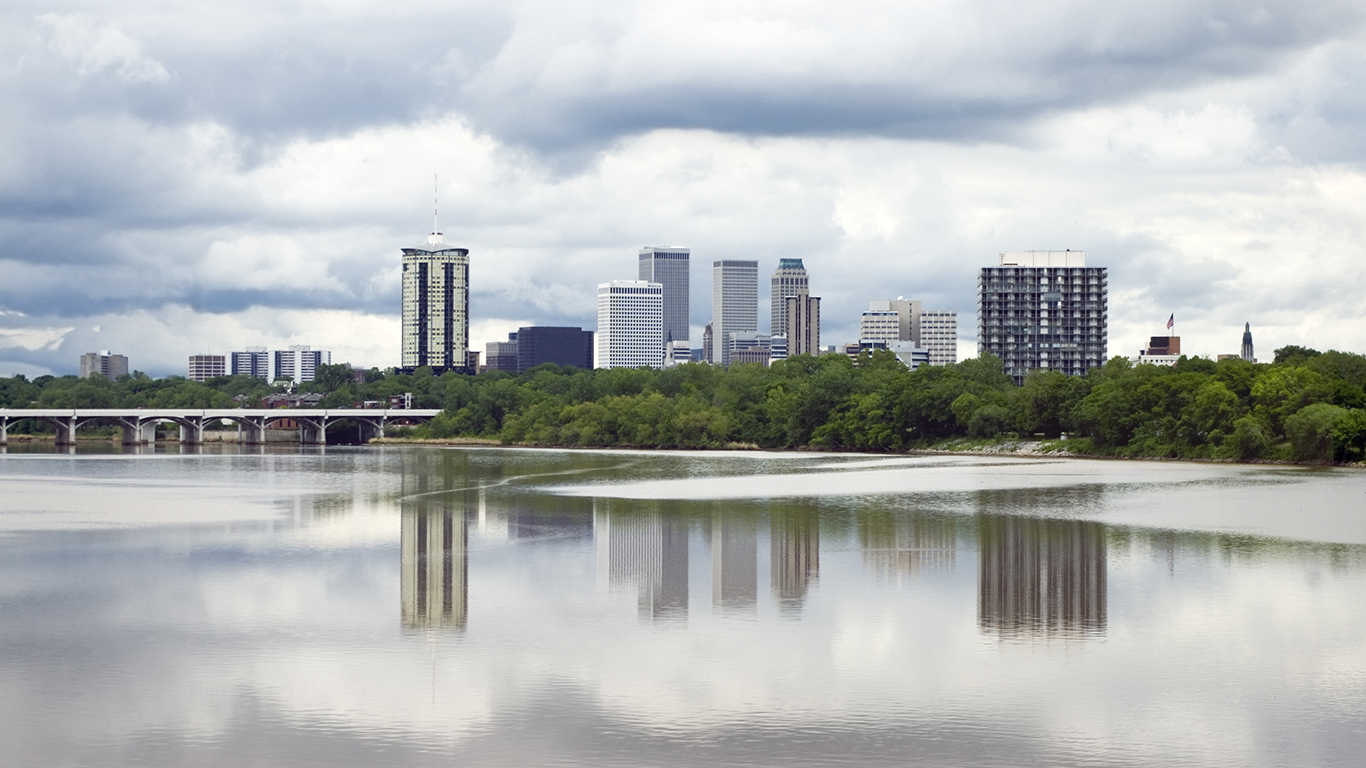
31. Oklahoma
> Average yearly rainfall: 33.8 inches
> Average monthly rainfall: 3.3 inches
> Rainiest time of year: 5.2 inches in May
See all stories featuring: Oklahoma

30. Alaska
> Average yearly rainfall: 36.7 inches
> Average monthly rainfall: 3.1 inches
> Rainiest time of year: 4.7 inches in September
See all stories featuring: Alaska
[in-text-ad]

29. Illinois
> Average yearly rainfall: 37.5 inches
> Average monthly rainfall: 3.1 inches
> Rainiest time of year: 4.1 inches in May
See all stories featuring: Illinois

28. Ohio
> Average yearly rainfall: 38.3 inches
> Average monthly rainfall: 3.3 inches
> Rainiest time of year: 4.2 inches in May
See all stories featuring: Ohio
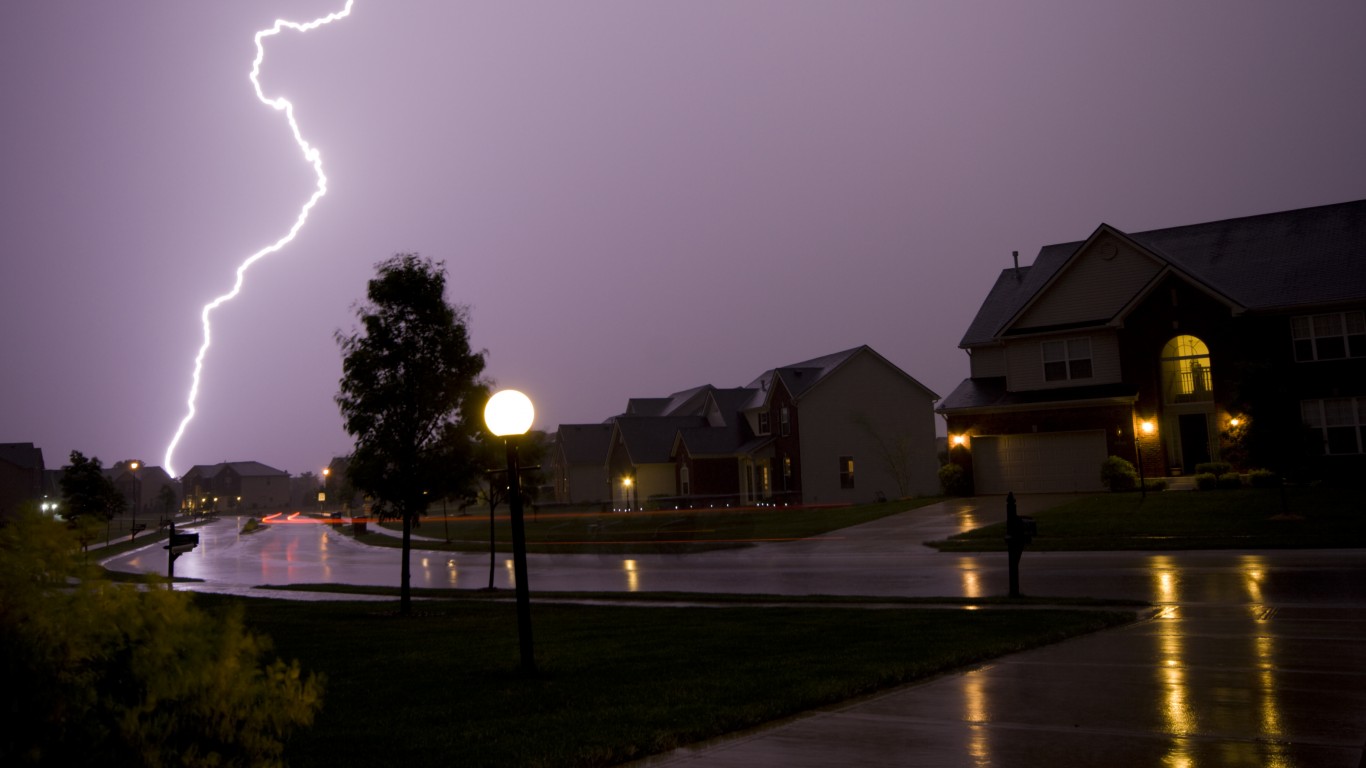
27. Indiana
> Average yearly rainfall: 39.7 inches
> Average monthly rainfall: 3.4 inches
> Rainiest time of year: 4.7 inches in May
See all stories featuring: Indiana
[in-text-ad-2]

26. New York
> Average yearly rainfall: 40.3 inches
> Average monthly rainfall: 3.5 inches
> Rainiest time of year: 3.9 inches in June
See all stories featuring: New York

25. Missouri
> Average yearly rainfall: 40.5 inches
> Average monthly rainfall: 3.5 inches
> Rainiest time of year: 5.0 inches in May
See all stories featuring: Missouri
[in-text-ad]

24. Vermont
> Average yearly rainfall: 41.7 inches
> Average monthly rainfall: 3.1 inches
> Rainiest time of year: 4.2 inches in July
See all stories featuring: Vermont

23. Massachusetts
> Average yearly rainfall: 42.0 inches
> Average monthly rainfall: 4.0 inches
> Rainiest time of year: 4.7 inches in March
See all stories featuring: Massachusetts

22. Maine
> Average yearly rainfall: 42.0 inches
> Average monthly rainfall: 3.6 inches
> Rainiest time of year: 4.3 inches in November
See all stories featuring: Maine
[in-text-ad-2]

21. Pennsylvania
> Average yearly rainfall: 42.0 inches
> Average monthly rainfall: 3.4 inches
> Rainiest time of year: 4.3 inches in July
See all stories featuring: Pennsylvania

20. Washington
> Average yearly rainfall: 42.0 inches
> Average monthly rainfall: 3.2 inches
> Rainiest time of year: 6.1 inches in November
See all stories featuring: Washington
[in-text-ad]

19. Maryland
> Average yearly rainfall: 42.6 inches
> Average monthly rainfall: 3.5 inches
> Rainiest time of year: 4.1 inches in July
See all stories featuring: Maryland

18. Virginia
> Average yearly rainfall: 42.9 inches
> Average monthly rainfall: 3.6 inches
> Rainiest time of year: 4.5 inches in July
See all stories featuring: Virginia

17. New Hampshire
> Average yearly rainfall: 43.5 inches
> Average monthly rainfall: 5.7 inches
> Rainiest time of year: 6.8 inches in November
See all stories featuring: New Hampshire
[in-text-ad-2]

16. Delaware
> Average yearly rainfall: 43.5 inches
> Average monthly rainfall: 3.6 inches
> Rainiest time of year: 4.6 inches in July
See all stories featuring: Delaware

15. West Virginia
> Average yearly rainfall: 44.7 inches
> Average monthly rainfall: 3.6 inches
> Rainiest time of year: 5.0 inches in July
See all stories featuring: West Virginia
[in-text-ad]

14. New Jersey
> Average yearly rainfall: 45.0 inches
> Average monthly rainfall: 3.6 inches
> Rainiest time of year: 4.1 inches in March
See all stories featuring: New Jersey

13. Rhode Island
> Average yearly rainfall: 45.2 inches
> Average monthly rainfall: 3.9 inches
> Rainiest time of year: 5.0 inches in March
See all stories featuring: Rhode Island

12. Connecticut
> Average yearly rainfall: 46.9 inches
> Average monthly rainfall: 3.6 inches
> Rainiest time of year: 4.0 inches in April
See all stories featuring: Connecticut
[in-text-ad-2]

11. Kentucky
> Average yearly rainfall: 46.9 inches
> Average monthly rainfall: 3.9 inches
> Rainiest time of year: 5.1 inches in May
See all stories featuring: Kentucky

10. South Carolina
> Average yearly rainfall: 48.0 inches
> Average monthly rainfall: 3.9 inches
> Rainiest time of year: 5.9 inches in August
See all stories featuring: South Carolina
[in-text-ad]

9. North Carolina
> Average yearly rainfall: 49.3 inches
> Average monthly rainfall: 4.0 inches
> Rainiest time of year: 5.2 inches in August
See all stories featuring: North Carolina

8. Arkansas
> Average yearly rainfall: 49.6 inches
> Average monthly rainfall: 4.0 inches
> Rainiest time of year: 5.1 inches in May
See all stories featuring: Arkansas

7. Georgia
> Average yearly rainfall: 50.1 inches
> Average monthly rainfall: 3.9 inches
> Rainiest time of year: 5.1 inches in July
See all stories featuring: Georgia
[in-text-ad-2]

6. Tennessee
> Average yearly rainfall: 51.6 inches
> Average monthly rainfall: 4.1 inches
> Rainiest time of year: 4.8 inches in July
See all stories featuring: Tennessee

5. Florida
> Average yearly rainfall: 53.7 inches
> Average monthly rainfall: 4.5 inches
> Rainiest time of year: 7.5 inches in August
See all stories featuring: Florida
[in-text-ad]
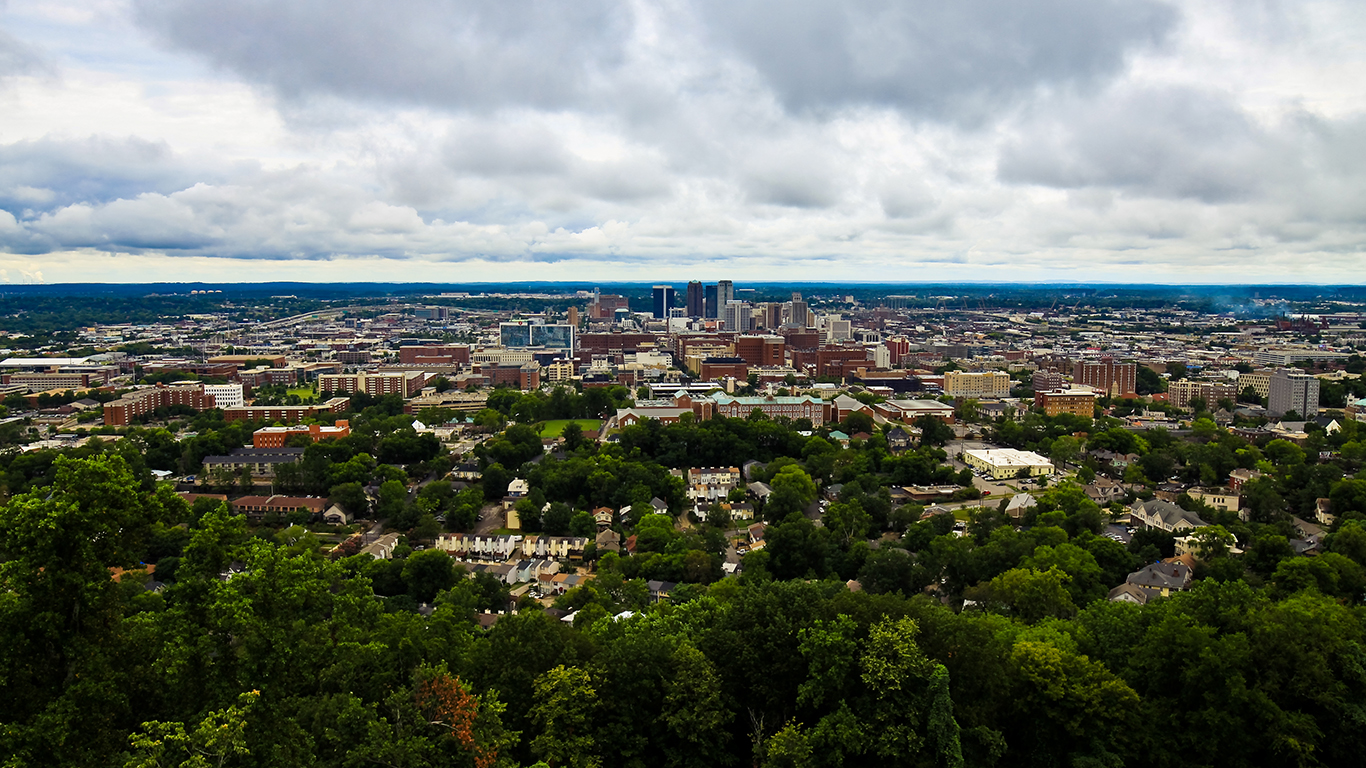
4. Alabama
> Average yearly rainfall: 55.3 inches
> Average monthly rainfall: 4.7 inches
> Rainiest time of year: 5.7 inches in March
See all stories featuring: Alabama
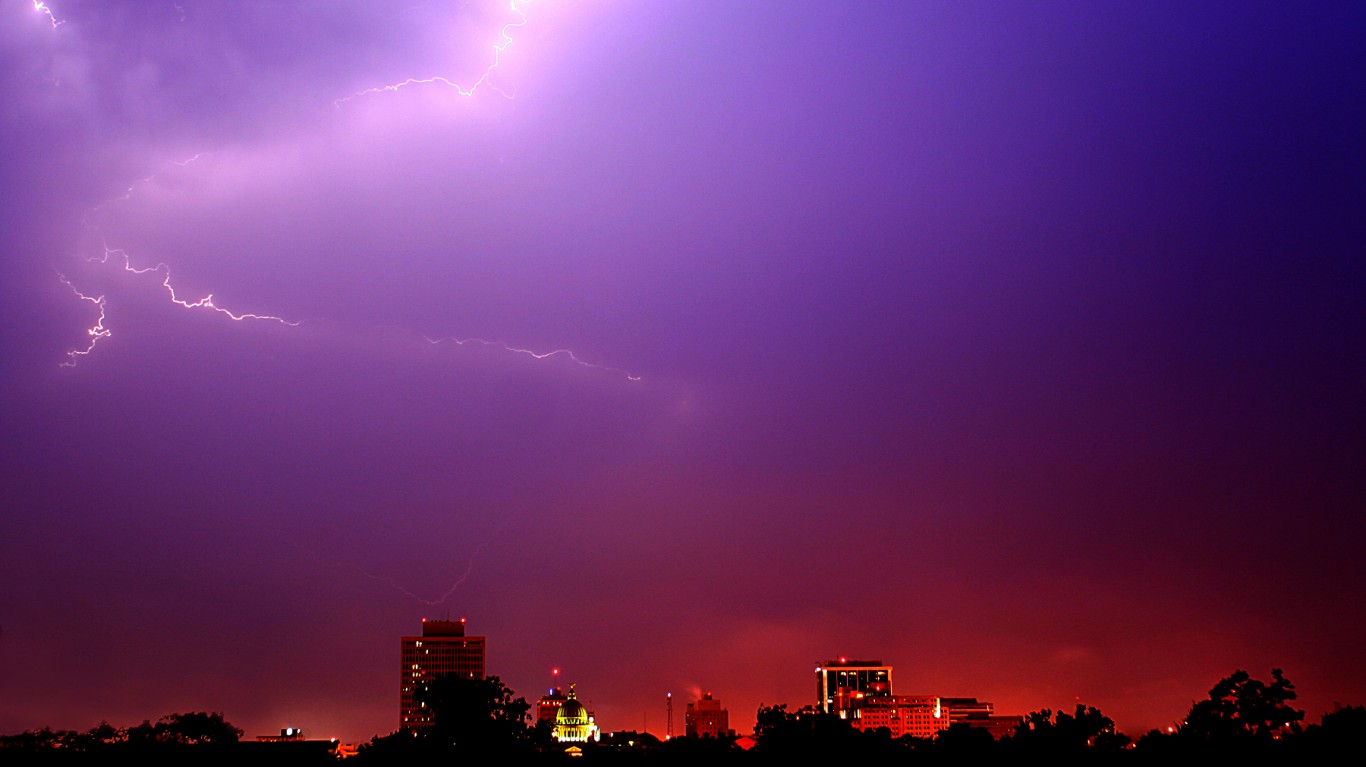
3. Mississippi
> Average yearly rainfall: 55.5 inches
> Average monthly rainfall: 4.6 inches
> Rainiest time of year: 5.5 inches in December
See all stories featuring: Mississippi

2. Louisiana
> Average yearly rainfall: 56.9 inches
> Average monthly rainfall: 4.8 inches
> Rainiest time of year: 6.6 inches in June
See all stories featuring: Louisiana
[in-text-ad-2]
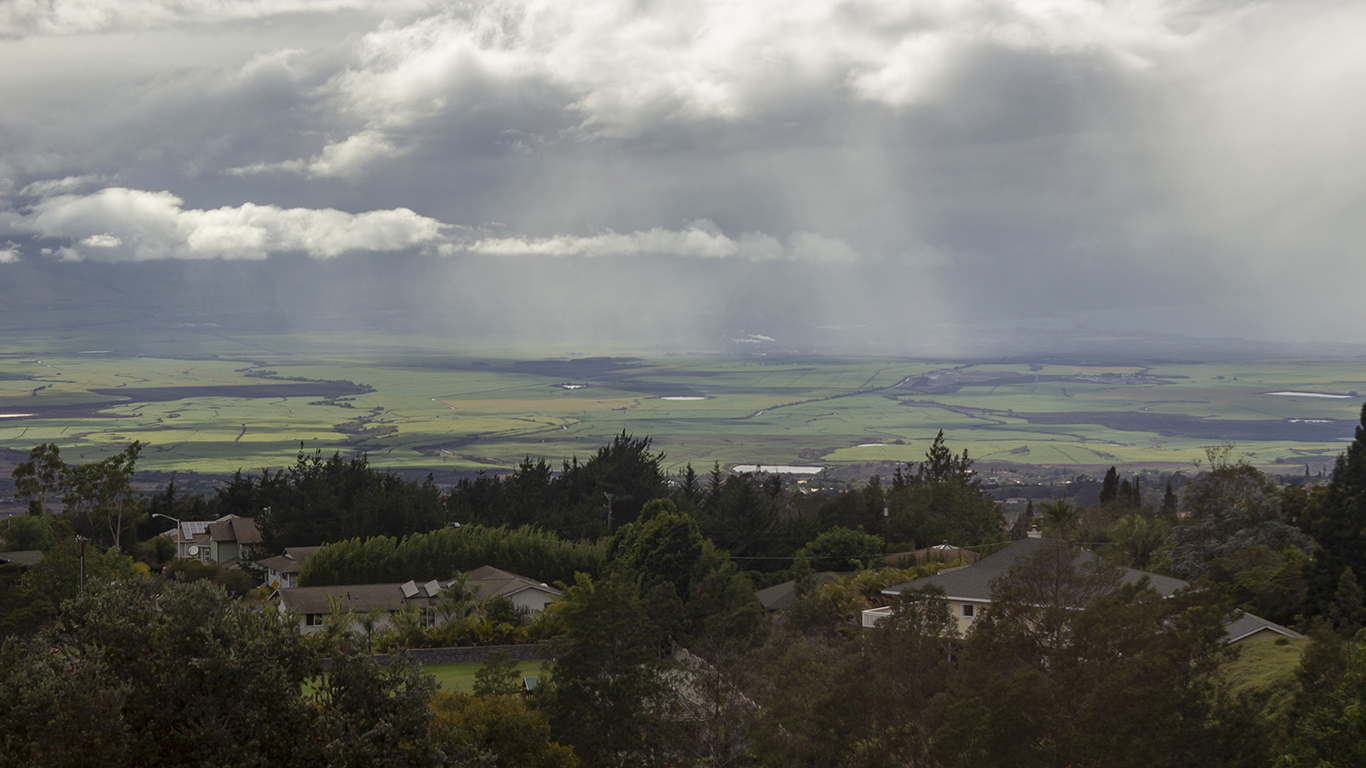
1. Hawaii
> Average yearly rainfall: 57.2 inches
> Average monthly rainfall: 4.8 inches
> Rainiest time of year: 7.7 inches in December
See all stories featuring: Hawaii
The Average American Is Losing Their Savings Every Day (Sponsor)
If you’re like many Americans and keep your money ‘safe’ in a checking or savings account, think again. The average yield on a savings account is a paltry .4% today, and inflation is much higher. Checking accounts are even worse.
Every day you don’t move to a high-yield savings account that beats inflation, you lose more and more value.
But there is good news. To win qualified customers, some accounts are paying 9-10x this national average. That’s an incredible way to keep your money safe, and get paid at the same time. Our top pick for high yield savings accounts includes other one time cash bonuses, and is FDIC insured.
Click here to see how much more you could be earning on your savings today. It takes just a few minutes and your money could be working for you.
Thank you for reading! Have some feedback for us?
Contact the 24/7 Wall St. editorial team.
 24/7 Wall St.
24/7 Wall St.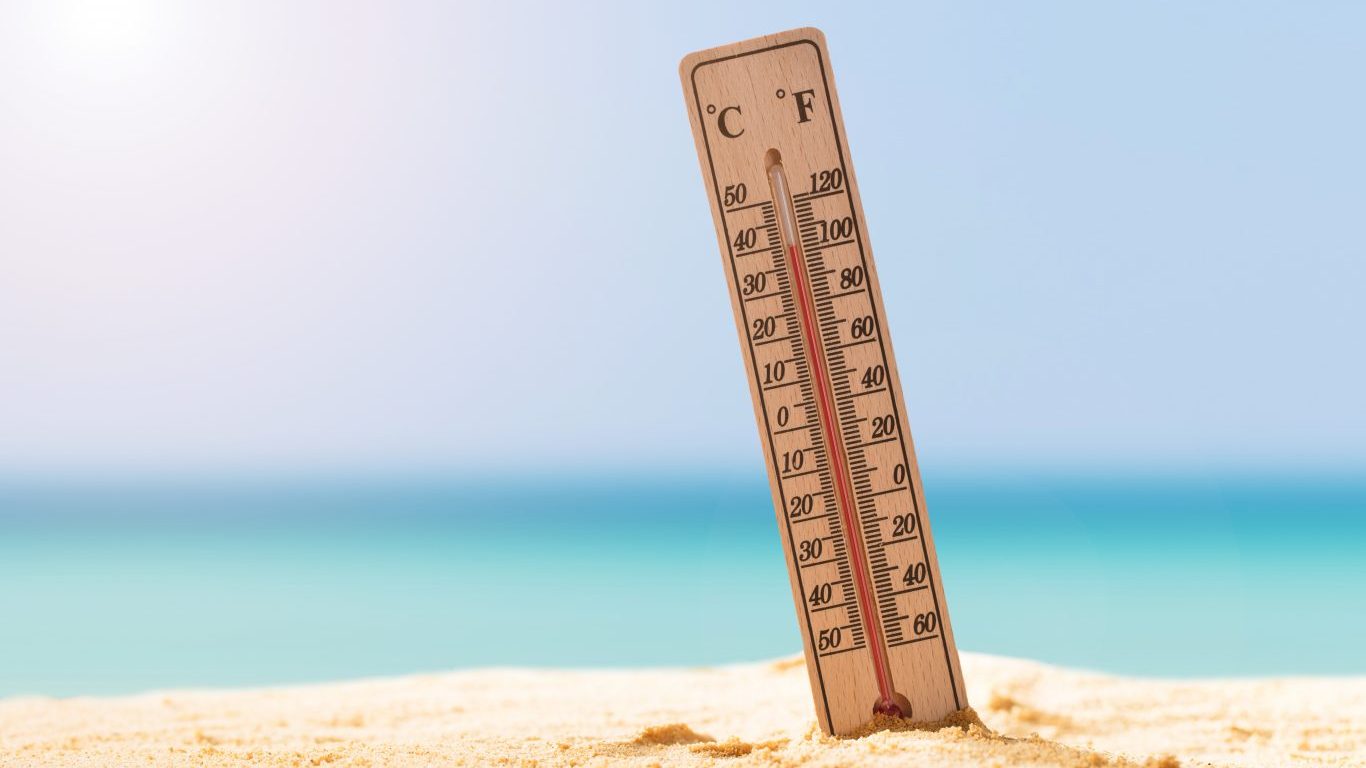 24/7 Wall St.
24/7 Wall St. 24/7 Wall St.
24/7 Wall St. 24/7 Wall St.
24/7 Wall St.

